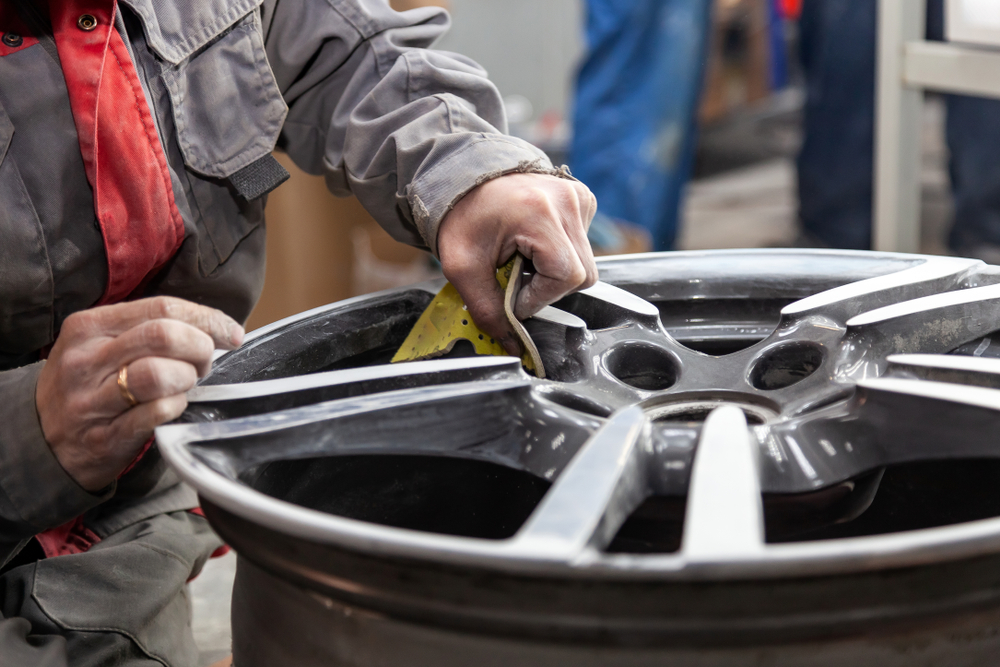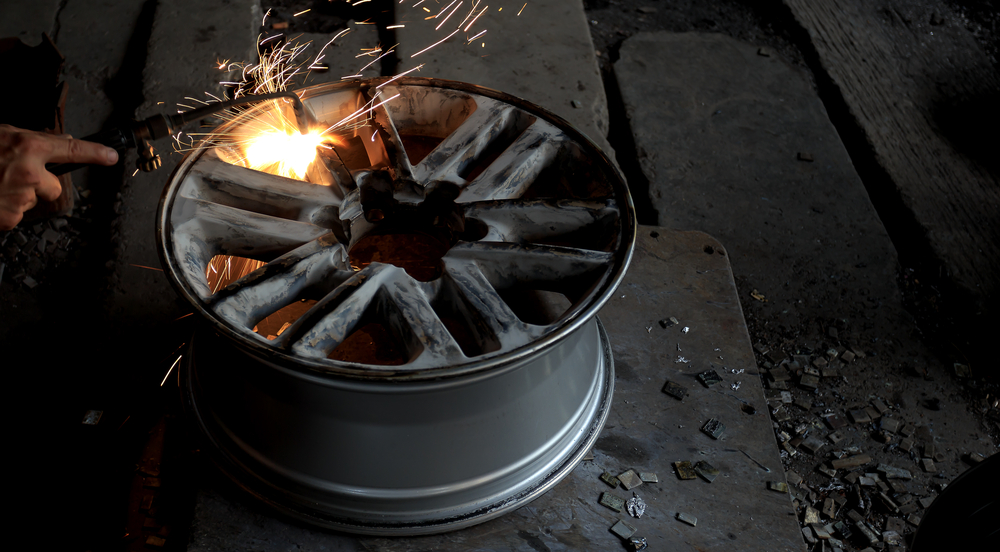The Different Kinds Of Alloy Wheels
(We Can Repair All Of Them!)
An alloy is technically a mixture of a metal and other elements. The different combinations create different alloys that all have different properties. These properties give each a different look and feel, as well as variations in performance and resilience to the elements. Generally, alloys are stronger and more resilient than pure metals, which is why people choose alloys where exposure to the elements can result in wear and tear.
Check out the full suite of alloy wheels below, and remember: if you need any repairs to bring your alloys up to looking absolutely fantastic, make sure you get in touch. Call 0416 527 220.
Aluminium Alloys Built For Strength
The most popular alloys are made with magnesium or aluminium. The aluminium or magnesium alloys are lighter than their pure-metal counterparts, but are just as strong. They also look a lot better.
Steel, an alloy of iron and carbon, is the most common material used in wheel manufacturing. However, the term “alloy wheel” is used for wheels made from nonferrous alloys – alloys that don’t have any iron in them. Thus, when you hear the term “alloy wheel”, chances are the wheel is made using aluminium or magnesium.

“Mag Wheels” – The Classic Look Of Magnesium Alloys
The original “mag wheels” were made from magnesium and were originally used for racing. Then, throughout the 1960s, they became super popular in standard production cars. In fact, if you look at a classic car, it might even have pure magnesium wheels. Unfortunately, pure magnesium isn’t a great choice for wheels – it tends to pit, crack, and is more susceptible to corrosion.
Fortunately, it didn’t take long for engineers to start developing other alloy types, and that’s when aluminium became more popular. Thus, the term “mag wheels” was widely used to refer to any die-cast wheels (see below) made from any modern materials, including aluminium alloy wheels, right through to plastic and composite wheels used for bicycles, wheelchairs, rollerblades, and skateboards.
Low-pressure Die Casting
Die casting is a manufacturing process whereby the metal is melted under high heat. Then, under low pressure, the metal is sealed and a pressurized air or a ‘cover gas mix’ forces the molten metal up a straw-like filler tube into a mould, or ‘die’.
There, the metal solidifies in its new form and you have an alloy wheel. When done properly, low-pressure die casting yields better results than standard cast alloy wheels.
High-pressure Die Casting
This process is very similar to the low-pressure die-casting process. The die is arranged in a large machine that has a high closing force. This forces the die closed. The molten magnesium is poured into a filler tube (in this case, called a shot sleeve). Then, a piston pushes the metal into the die very quickly under high pressure. Once the magnesium solidifies, the die is opened and you have a brand new magnesium, die-cast wheel.
This method is much more economical than other methods, and results in lower prices for consumers, without compromising on corrosion resistance. However, they are less ductile and not as strong as low-pressure die-cast wheels.

High-Performance Forged Wheels
Forging produces the best performance in alloy wheels – but it’s a complex process that often involves any combination of heating, rolling, applying high pressure, and hammering. The result is that the molecular structure of the alloy becomes simultaneously much stronger and lighter. They also have much higher ‘toughness’ and ‘ductility’ and aluminium wheels. On the downside, it’s a much more labour-intensive process and costs are therefore much higher.
Multi-piece Alloy Wheels
Forged wheels can be forged in one, two, or three pieces. Where the wheel is made up of two or three pieces, the wheel merely needs to be assembled into the finished product.
Aftermarket Wheels
If you’re looking for lighter or better looking wheels to give your car a certain look or style, there’s a broad range of alloy wheels for you to choose from, all the way from the standard 14 inch wheels, right through to the big 28-inches.
However, research by Car and Driver conducted using a selection of differently sized alloy wheels from 16 to 19 in (41 to 48 cm) all outfitted with the same make and model of tires showed that both acceleration and fuel economy suffered with larger wheels. So, in conclusion, there are a lot of factors to consider when choosing the alloys you want.

